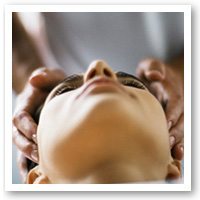Bladder infection or no bladder infection
 Interestingly, in the past year I have seen a few female patients that have mentioned ongoing bladder infection-type symptoms, but there was no bladder infection. In all the cases, urine tests were negative for infection, and a few were given antibiotics which did not make a difference to their symptoms. This doesn’t really make sense in the medical world. According to symptoms it seems like an infection but it doesn’t test as one and doesn’t respond like one. In these cases they were all women who had had children. Some had noticed these symptoms on and off since childbirth, while others many years after childbirth.
Interestingly, in the past year I have seen a few female patients that have mentioned ongoing bladder infection-type symptoms, but there was no bladder infection. In all the cases, urine tests were negative for infection, and a few were given antibiotics which did not make a difference to their symptoms. This doesn’t really make sense in the medical world. According to symptoms it seems like an infection but it doesn’t test as one and doesn’t respond like one. In these cases they were all women who had had children. Some had noticed these symptoms on and off since childbirth, while others many years after childbirth.
What I found was that they all responded well, (although some faster than others) to an adjustment to their bladder. An organ adjustment might sound strange but it is literally getting the organ to move slightly within the body cavity to a better position. Our organs are held in place by a type of skin that connects between all our organs. Sometimes for different reasons, such as surgery, the strain of pregnancy or giving birth, or accidents the organs can be jarred, twisted or pushed out of position and the skin that holds them in place may tighten and end up holding them in that new incorrect position. This can cause a sense of tension in the body, or it can cause some changes to the organs ability to function ideally, for example if the Large Intestine is affected it may lead to constipation.
In this case I found there was a downward pressure of the bladder onto the urethra which is the tube that carries urine from the bladder on urination. This pressure caused irritation to the bladder and urethra and hence resulted in infection type sensation. In one case the symptoms would return slightly whenever she lifted something heavy, so again this would create downward pressure in the abdominal cavity and therefore affect the bladder again.
Organ adjustments is a Chiropractic technique that can be used for many different symptoms. It is often used in addition to other adjustments or muscle releases. It may be used for digestive issues such as diarrhea or constipation or indigestion. It can also be useful for areas of pain or tightness such as in the ribs or throat. It is a technique that is also very helpful for ongoing tension or pulling sensations following surgery, as you may need some adjusting simply due to the invasive nature of surgery or to break up scar tissue as a result of surgery.

 Like all modern healthcare, Chiropractic techniques are constantly changing with the times. Just as your GP no longer applies leeches to you, Chiropractors have updates their techniques for improved results and experiences. Here are some common myths debunked…
Like all modern healthcare, Chiropractic techniques are constantly changing with the times. Just as your GP no longer applies leeches to you, Chiropractors have updates their techniques for improved results and experiences. Here are some common myths debunked… The back or spinal column is the central support structure of the body, and is therefore crucial to our functioning ñ most especially our mobility. The nerves that radiate out from the spinal cord are essential to the operation of every muscle, nerve and organ in the body ñ so if they become trapped or pinched in any way, they can affect our posture and movement significantly. This is often what happens when the discs that cushion the spinal column become worn or rupture. Other sources of back pain involve injury or strains to the muscles of the back ñ often from unusual movements or over stretching. Lifting and carrying with poor techniques also places strain on back muscles, especially if the knees are not bent, and the back ends up taking all the stress. Typical symptoms of a back problem include headaches, localised pain in the neck or back which may radiate to the shoulders, arms or legs. Chiropractic treatment is a popular alternative to invasive surgery or conventional medication, and is a recognised profession by the medical establishment.
The back or spinal column is the central support structure of the body, and is therefore crucial to our functioning ñ most especially our mobility. The nerves that radiate out from the spinal cord are essential to the operation of every muscle, nerve and organ in the body ñ so if they become trapped or pinched in any way, they can affect our posture and movement significantly. This is often what happens when the discs that cushion the spinal column become worn or rupture. Other sources of back pain involve injury or strains to the muscles of the back ñ often from unusual movements or over stretching. Lifting and carrying with poor techniques also places strain on back muscles, especially if the knees are not bent, and the back ends up taking all the stress. Typical symptoms of a back problem include headaches, localised pain in the neck or back which may radiate to the shoulders, arms or legs. Chiropractic treatment is a popular alternative to invasive surgery or conventional medication, and is a recognised profession by the medical establishment.